ICGOO在线商城 > 集成电路(IC) > PMIC - 稳压器 - 线性 > TC1264-3.3VDBTR
- 型号: TC1264-3.3VDBTR
- 制造商: Microchip
- 库位|库存: xxxx|xxxx
- 要求:
| 数量阶梯 | 香港交货 | 国内含税 |
| +xxxx | $xxxx | ¥xxxx |
查看当月历史价格
查看今年历史价格
TC1264-3.3VDBTR产品简介:
ICGOO电子元器件商城为您提供TC1264-3.3VDBTR由Microchip设计生产,在icgoo商城现货销售,并且可以通过原厂、代理商等渠道进行代购。 TC1264-3.3VDBTR价格参考¥4.76-¥6.11。MicrochipTC1264-3.3VDBTR封装/规格:PMIC - 稳压器 - 线性, Linear Voltage Regulator IC Positive Fixed 1 Output 3.3V 800mA SOT-223-3。您可以下载TC1264-3.3VDBTR参考资料、Datasheet数据手册功能说明书,资料中有TC1264-3.3VDBTR 详细功能的应用电路图电压和使用方法及教程。
| 参数 | 数值 |
| 产品目录 | 集成电路 (IC)半导体 |
| 描述 | IC REG LDO 3.3V 0.8A SOT223-3低压差稳压器 800mA Fixed Output |
| 产品分类 | |
| 品牌 | Microchip Technology |
| 产品手册 | |
| 产品图片 |
|
| rohs | 符合RoHS无铅 / 符合限制有害物质指令(RoHS)规范要求 |
| 产品系列 | 电源管理 IC,低压差稳压器,Microchip Technology TC1264-3.3VDBTR- |
| 数据手册 | 点击此处下载产品Datasheethttp://www.microchip.com/mymicrochip/filehandler.aspx?ddocname=en011437http://www.microchip.com/mymicrochip/filehandler.aspx?ddocname=en023833 |
| 产品型号 | TC1264-3.3VDBTR |
| PCN组件/产地 | |
| PSRR/纹波抑制—典型值 | 64 dB |
| 产品 | LDO Regulators |
| 产品种类 | 低压差稳压器 |
| 供应商器件封装 | SOT-223-3 |
| 其它名称 | TC12643.3VDBTR |
| 包装 | 带卷 (TR) |
| 商标 | Microchip Technology |
| 回动电压—最大值 | 1.4 V |
| 安装类型 | 表面贴装 |
| 安装风格 | SMD/SMT |
| 封装 | Reel |
| 封装/外壳 | TO-261-4,TO-261AA |
| 封装/箱体 | SOT-223-3 |
| 工作温度 | -40°C ~ 125°C |
| 工厂包装数量 | 4000 |
| 最大工作温度 | + 125 C |
| 最大输入电压 | 6 V |
| 最小工作温度 | - 40 C |
| 最小输入电压 | 2.7 V |
| 标准包装 | 4,000 |
| 电压-跌落(典型值) | 1.2V @ 800mA |
| 电压-输入 | 最高 6V |
| 电压-输出 | 3.3V |
| 电压调节准确度 | 0.5 % |
| 电流-输出 | 800mA |
| 电流-限制(最小值) | - |
| 电源电流 | 80 uA |
| 稳压器拓扑 | 正,固定式 |
| 稳压器数 | 1 |
| 类型 | Low Dropout Voltage |
| 线路调整率 | 0.007 % |
| 负载调节 | 0.002 % / mA |
| 输出电压 | 3.3 V |
| 输出电流 | 800 mA |
| 输出端数量 | 1 Output |
| 输出类型 | Fixed |

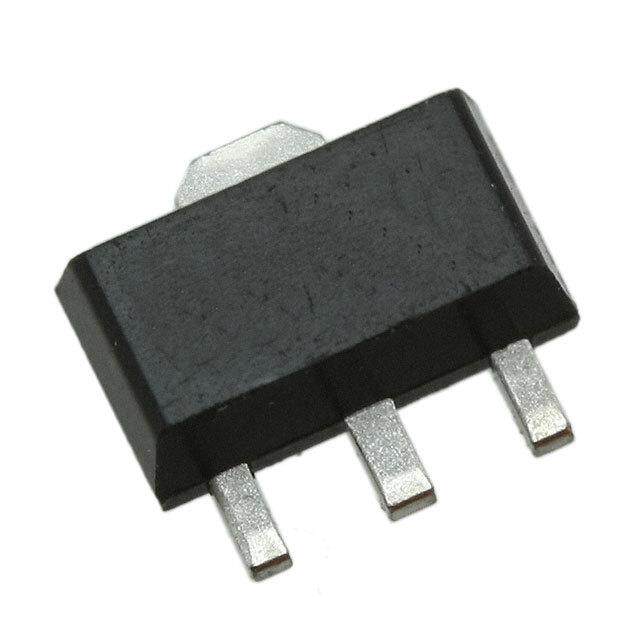
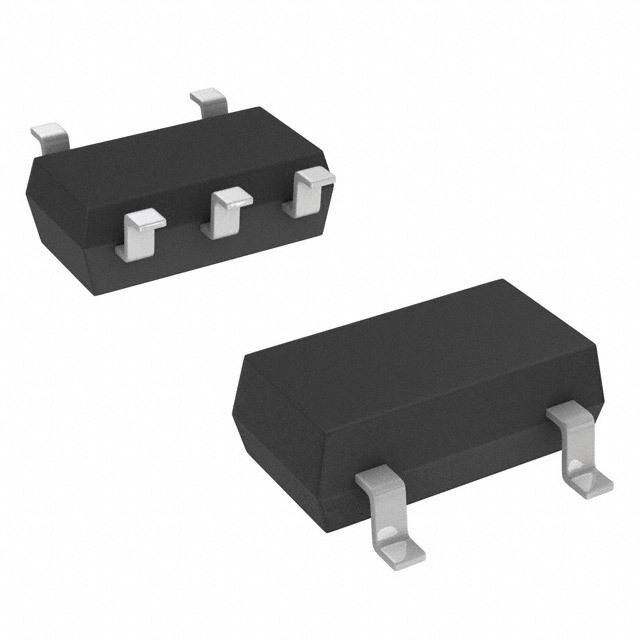
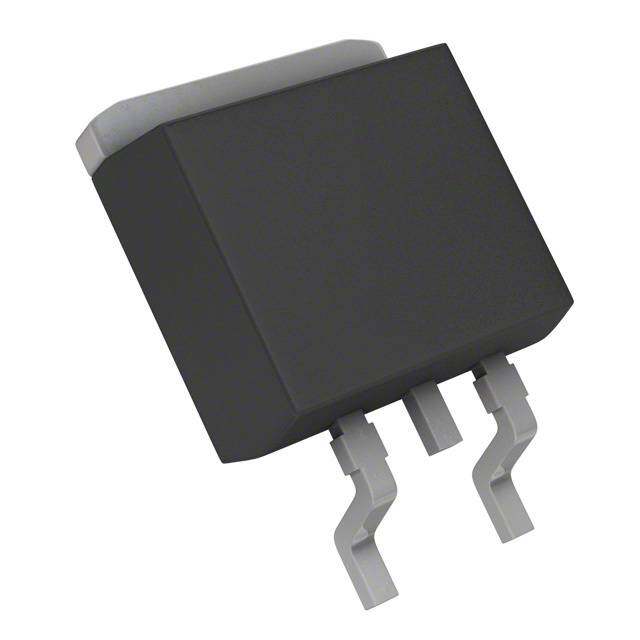
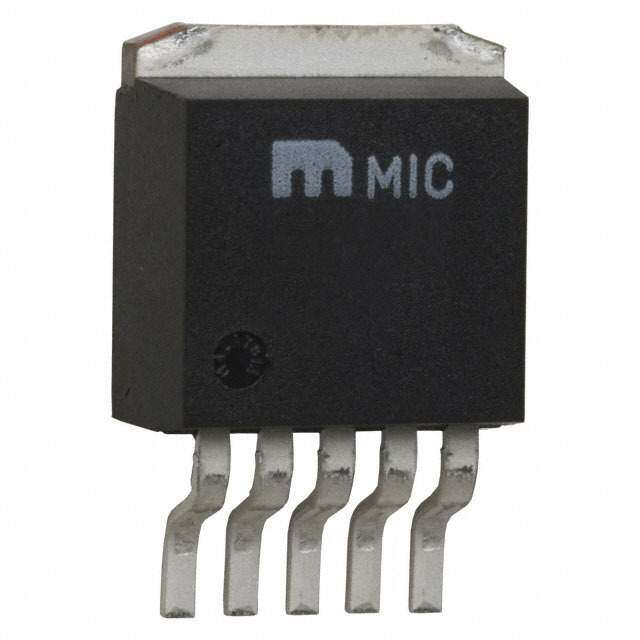
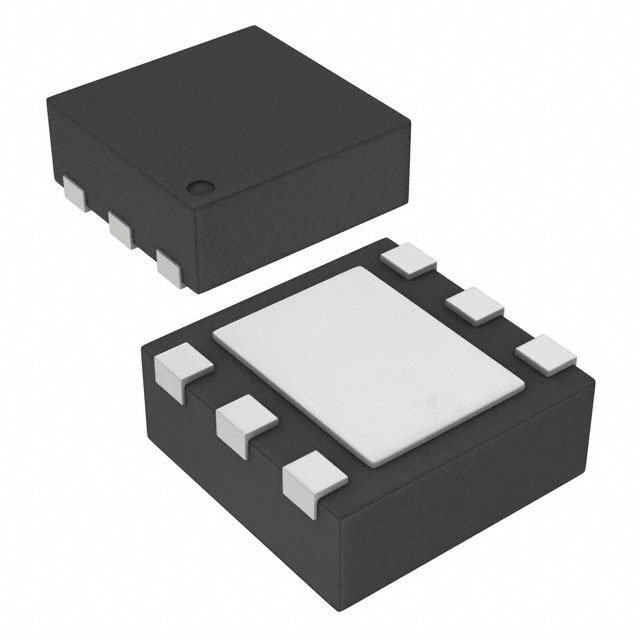
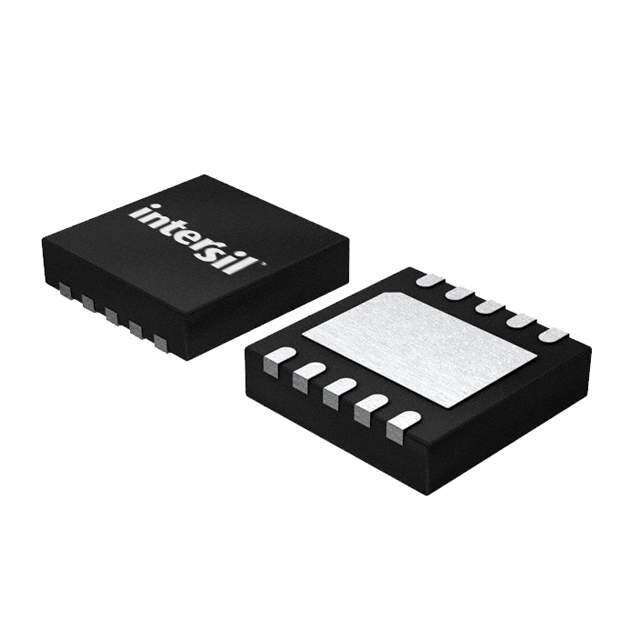


- 商务部:美国ITC正式对集成电路等产品启动337调查
- 曝三星4nm工艺存在良率问题 高通将骁龙8 Gen1或转产台积电
- 太阳诱电将投资9.5亿元在常州建新厂生产MLCC 预计2023年完工
- 英特尔发布欧洲新工厂建设计划 深化IDM 2.0 战略
- 台积电先进制程称霸业界 有大客户加持明年业绩稳了
- 达到5530亿美元!SIA预计今年全球半导体销售额将创下新高
- 英特尔拟将自动驾驶子公司Mobileye上市 估值或超500亿美元
- 三星加码芯片和SET,合并消费电子和移动部门,撤换高东真等 CEO
- 三星电子宣布重大人事变动 还合并消费电子和移动部门
- 海关总署:前11个月进口集成电路产品价值2.52万亿元 增长14.8%
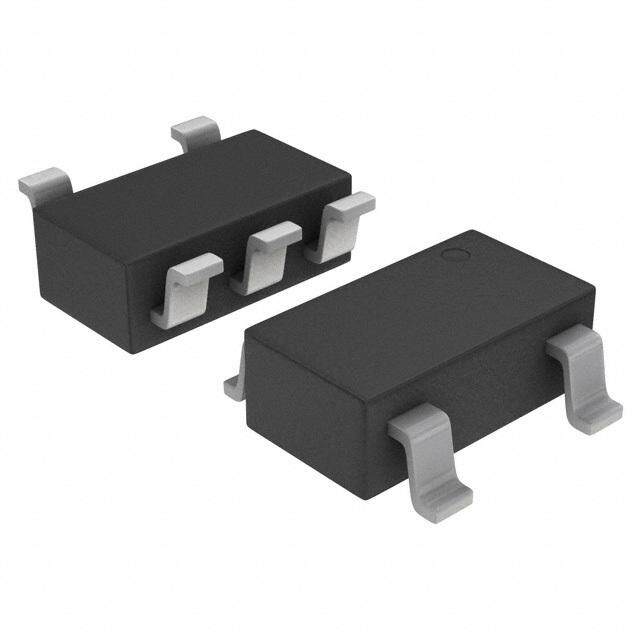
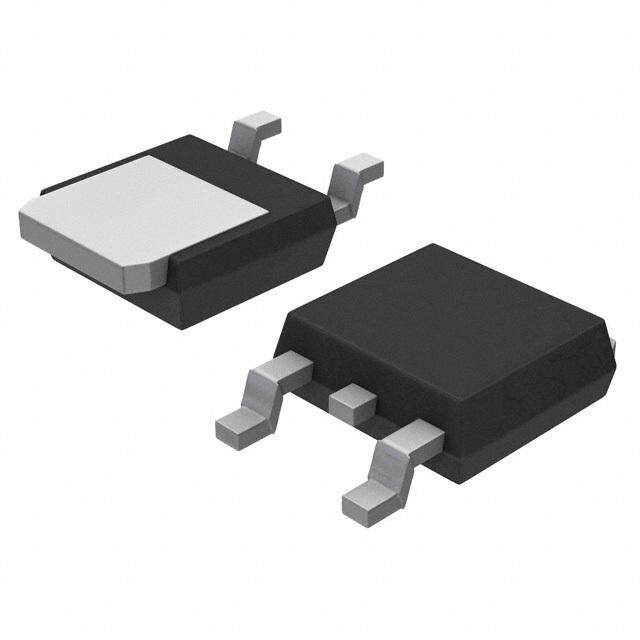
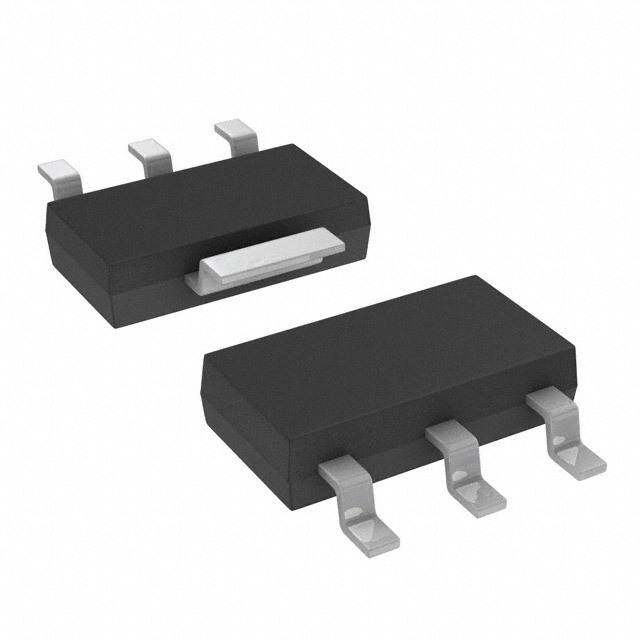



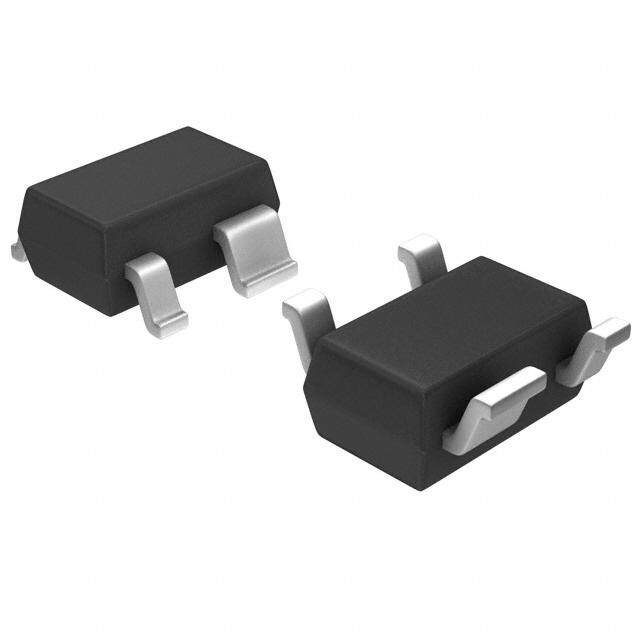
PDF Datasheet 数据手册内容提取
TC1264 800 mA Fixed-Output CMOS LDO with Shutdown Features: Description: • Very Low Dropout Voltage The TC1264 is a fixed-output, high-accuracy (typically • 800mA Output Current ±0.5%) CMOS low dropout regulator. Designed specifically for battery-operated systems, the TC1264’s • High Output Voltage Accuracy CMOS construction eliminates wasted ground current, • Standard or Custom Output Voltages significantly extending battery life. Total supply current • Overcurrent and Overtemperature Protection is typically 80µA at full load (20 to 60 times lower than in bipolar regulators). Applications: TC1264 key features include ultra low noise operation, • Battery Operated Systems very low dropout voltage (typically 450mV at full load), and fast response to step changes in load. • Portable Computers • Medical Instruments The TC1264 incorporates both over temperature and over current protection. The TC1264 is stable with an • Instrumentation output capacitor of only 1µF and has a maximum • Cellular/GSM/PHS Phones output current of 800mA. It is available in 3-pin • Linear Post-Regulators for SMPS SOT-223, 3-pin TO-220 and 3-pin DDPAK packages. • Pagers Package Type Typical Application 3-Pin TO-220 3-Pin DDPAK FRONT VIEW VIN VIN VOUT + VOUT TAB IS GND C 1 TC1264 1µF TC1264 TC1264 GND 1 2 3 1 2 3 3-Pin SOT-223 N D T VIN GND VOUT FRONT VIEW VI GN VOU D 3 V N OUT G S B I 2 GND A T 1 V TC1264 IN 2010 Microchip Technology Inc. DS21375D-page 1
TC1264 1.0 ELECTRICAL † Notice: Stresses above those listed under "Maximum Ratings" may cause permanent damage to the device. This is CHARACTERISTICS a stress rating only and functional operation of the device at those or any other conditions above those indicated in the Absolute Maximum Ratings † operation listings of this specification is not implied. Exposure to maximum rating conditions for extended periods may affect Input Voltage.........................................................6.5V device reliability. Output Voltage..................(V – 0.3V) to (V + 0.3V) SS IN Power Dissipation................Internally Limited (Note8) Maximum Voltage on Any Pin ........V +0.3V to -0.3V IN Operating Temperature Range......-40°C < T < 125°C J Storage Temperature..........................-65°C to +150°C DC CHARACTERISTICS Electrical Specifications: Unless otherwise indicated, V = V + 1.5V, (Note1), I = 100µA, C = 3.3µF, SHDN > V , IN R L L IH T = +25°C. Boldface type specifications apply for junction temperatures of -40°C to +125°C. A Parameters Sym Min Typ Max Units Conditions Input Operating Voltage V 2.7 — 6.0 V Note2 IN Maximum Output Current I 800 — — mA OUTMAX Output Voltage V V – 2.5% V ± 0.5% V + 2.5% V V 2.5V OUT R R R R V – 2% V ± 0.5% V + 3% V = 1.8V R R R R V – 7% — V + 3% I = 0.1mA to 800mA R R L (Note3) V Temperature Coefficient V /T — 40 — ppm/°C Note4 OUT OUT Line Regulation V /V — 0.007 0.35 % (V + 1V) V 6V OUT IN R IN Load Regulation (Note5) V /V -0.01 0.002 0 %/mA I = 0.1mA to I OUT OUT L OUTMAX Dropout Voltage (Note6) V –V — 20 30 mV V 2.5V, I = 100µA IN OUT R L — 50 160 VR 2.5V, IL = 100mA — 150 480 VR 2.5V, IL = 300mA — 260 800 VR 2.5V, IL = 500mA — 450 1300 VR 2.5V, IL = 800mA — 1000 1200 V = 1.8V, I = 500mA R L — 1200 1400 I = 800mA L Supply Current I — 80 130 µA SHDN = V , I = 0 DD IH L Power Supply Rejection Ratio PSRR — 64 — db F 1kHz Output Short Circuit Current I — 1200 — mA V = 0V OUTSC OUT Note 1: V is the regulator output voltage setting. R 2: The minimum V has to justify the conditions: V V + V and V 2.7V for I = 0.1mA to I . IN IN R DROPOUT IN L OUTMAX 3: This accuracy represents the worst-case over the entire output current and temperature range. 4: V –V –106 TCV = -------O----U---T---M----A----X-------------O---U----T---M----I--N------------------- OUT V T OUT 5: Regulation is measured at a constant junction temperature using low duty cycle pulse testing. Load regulation is tested over a load range from 0.1mA to the maximum specified output current. Changes in output voltage due to heating effects are covered by the thermal regulation specification. 6: Dropout voltage is defined as the input-to-output differential at which the output voltage drops 2% below its nominal value measured at a 1.5V differential. 7: Thermal regulation is defined as the change in output voltage at a time T after a change in power dissipation is applied, excluding load or line regulation effects. Specifications are for a current pulse equal to I at V = 6V for T = 10ms. LMAX IN 8: The maximum allowable power dissipation is a function of ambient temperature, the maximum allowable junction temperature and the thermal resistance from junction-to-air (i.e., T , T , ). Exceeding the maximum allowable power A J JA dissipation causes the device to initiate thermal shutdown. Please see Section5.0 “Thermal Considerations” for more details. DS21375D-page 2 2010 Microchip Technology Inc.
TC1264 DC CHARACTERISTICS (CONTINUED) Electrical Specifications: Unless otherwise indicated, V = V + 1.5V, (Note1), I = 100µA, C = 3.3µF, SHDN > V , IN R L L IH T = +25°C. Boldface type specifications apply for junction temperatures of -40°C to +125°C. A Parameters Sym Min Typ Max Units Conditions Thermal Regulation V /P — 0.04 — V/W Note7 OUT D Output Noise eN — 260 — nV/Hz IL = IOUTMAX, F = 10kHZ Note 1: V is the regulator output voltage setting. R 2: The minimum V has to justify the conditions: V V + V and V 2.7V for I = 0.1mA to I . IN IN R DROPOUT IN L OUTMAX 3: This accuracy represents the worst-case over the entire output current and temperature range. 4: V –V –106 TCV = -------O----U---T---M----A----X-------------O---U----T---M----I--N------------------- OUT V T OUT 5: Regulation is measured at a constant junction temperature using low duty cycle pulse testing. Load regulation is tested over a load range from 0.1mA to the maximum specified output current. Changes in output voltage due to heating effects are covered by the thermal regulation specification. 6: Dropout voltage is defined as the input-to-output differential at which the output voltage drops 2% below its nominal value measured at a 1.5V differential. 7: Thermal regulation is defined as the change in output voltage at a time T after a change in power dissipation is applied, excluding load or line regulation effects. Specifications are for a current pulse equal to I at V = 6V for T = 10ms. LMAX IN 8: The maximum allowable power dissipation is a function of ambient temperature, the maximum allowable junction temperature and the thermal resistance from junction-to-air (i.e., T , T , ). Exceeding the maximum allowable power A J JA dissipation causes the device to initiate thermal shutdown. Please see Section5.0 “Thermal Considerations” for more details. TEMPERATURE CHARACTERISTICS Electrical Specifications: Unless otherwise indicated, V = V + 1.5V, I = 100µA, C = 3.3µF, SHDN > V , T = +25°C. IN R L L IH A Parameters Sym Min Typ Max Units Conditions Temperature Ranges Specified Temperature Range T -40 — +125 °C (Note1) A Operating Temperature Range T -40 — +125 °C J Storage Temperature Range T -65 — +150 °C A Thermal Package Resistances Thermal Resistance, 3L-SOT-223 — 59 — °C/W JA Thermal Resistance, 3L-DDPAK — 71 — °C/W JA Thermal Resistance, 3L-TO-220 — 71 — °C/W JA Note 1: Operation in this range must not cause T to exceed Maximum Junction Temperature (+125°C). J 2010 Microchip Technology Inc. DS21375D-page 3
TC1264 2.0 TYPICAL PERFORMANCE CURVES Note: The graphs and tables provided following this note are a statistical summary based on a limited number of samples and are provided for informational purposes only. The performance characteristics listed herein are not tested or guaranteed. In some graphs or tables, the data presented may be outside the specified operating range (e.g., outside specified power supply range) and therefore outside the warranted range. 0.020 150 0.018 135 0.016 120 %) N ( 0.014 105 ULATIO 00..001102 ((cid:2)A)D 9705 VOUT = 3V EG 0.008 ID 60 R E 0.006 45 N LI 0.004 30 0.002 15 0.000 0 -40°C 0°C 25°C 70°C 85°C 125°C -40°C 0°C 25°C 70°C 85°C 125°C TEMPERATURE (°C) TEMPERATURE (°C) FIGURE 2-1: Line Regulation vs. FIGURE 2-4: I vs. Temperature. DD Temperature. 10.0 RLOAD = 50Ω 00..650500 85°C 125°C COUT = 1 μF 0.500 70°C Hz) 1.0 TAGE (V) 000...443505000 25°C √ L μ NOISE (V/ 0.1 ROPOUT VO 0000....221350500000 -40°C 0°C D 0.100 0.050 0.0 0.000 0.01 0.01 1 10 100 1000 0 100 200 300 400 500 600 700800 ILOAD (mA) FREQUENCY (kHz) FIGURE 2-2: Output Noise vs. Frequency. FIGURE 2-5: 3.0V Dropout Voltage vs. I . LOAD 0.0100 3.030 0.0090 3.020 ILOAD = 0.1 mA A)0.0080 3.010 GULATION (%/m0000....0000000074650000 VOUT = 3V 1 mA to 800 mA V (V)OUT 32222.....099990987600000 IILLOOAADD == 350000 mmAA E R0.0030 OAD 0.0020 22..994500 ILOAD = 800 mA L 0.0010 2.930 0.0100 2.920 -40°C 0°C 25°C 70°C 85°C 125°C -40°C 0°C 25°C 70°C 85°C 125°C TEMPERATURE (°C) TEMPERATURE (°C) FIGURE 2-3: Load Regulation vs. FIGURE 2-6: 3.0V V vs.Temperature. OUT Temperature. DS21375D-page 4 2010 Microchip Technology Inc.
TC1264 3.0 PIN DESCRIPTIONS The descriptions of the pins are listed in Table3-1. TABLE 3-1: PIN FUNCTION TABLE Pin No. 3-Pin SOT-223 Symbol Description 3-Pin TO-220 3-Pin DDPAK 1 V Unregulated supply input IN 2 GND Ground terminal 3 V Regulated voltage output OUT 3.1 Unregulated Supply (V ) IN Unregulated supply input. 3.2 Ground (GND) Ground terminal. 3.3 Regulated Output Voltage (V ) OUT Regulated voltage output. 2010 Microchip Technology Inc. DS21375D-page 5
TC1264 4.0 DETAILED DESCRIPTION 4.1 Output Capacitor The TC1264 is a precision, fixed output LDO. Unlike A 1µF (min) capacitor from VOUT to ground is required. bipolar regulators, the TC1264’s supply current does The output capacitor should have an effective series not increase with load current. In addition, V resistance greater than 0.1 and less than 5. A 1µF OUT remains stable and within regulation over the entire capacitor should be connected from VIN to GND if there 0mA to I load current range (an important is more than 10 inches of wire between the regulator LOADMAX consideration in RTC and CMOS RAM battery back-up and the AC filter capacitor, or if a battery is used as the applications). power source. Aluminum electrolytic or tantalum capacitor types can be used. (Since many aluminum Figure4-1 shows a typical application circuit. electrolytic capacitors freeze at approximately -30°C, solid tantalums are recommended for applications operating below -25°C.) When operating from sources other than batteries, supply-noise rejection and VIN VIN VOUT + C VOUT transient response can be improved by increasing the 1 TC1264 1µF value of the input and output capacitors and employing passive filtering techniques. GND SHDN FIGURE 4-1: Typical Application Circuit. DS21375D-page 6 2010 Microchip Technology Inc.
TC1264 5.0 THERMAL CONSIDERATIONS TABLE 5-2: THERMAL RESISTANCE GUIDELINES FOR TC1264 IN 5.1 Thermal Shutdown 3-PIN DDPAK/TO-220 PACKAGE Integrated thermal protection circuitry shuts the regulator off when die temperature exceeds 160°C. Copper Copper Board Thermal Area Area Resistance The regulator remains off until the die temperature Area (Topside)* (Backside) ) drops to approximately 150°C. JA 2500sqmm 2500sqmm 2500sqmm 25°C/W 5.2 Power Dissipation 1000sqmm 2500sqmm 2500sqmm 27°C/W 125sqmm 2500sqmm 2500sqmm 35°C/W The amount of power the regulator dissipates is primarily a function of input and output voltage, and * Tab of device attached to topside copper output current. The following equation is used to Equation5-1 can be used in conjunction with calculate worst-case actual power dissipation: Equation5-2 to ensure regulator thermal operation is within limits. For example: EQUATION 5-1: Given: P = V –V I D INMAX OUTMIN LOADMAX V = 3.3V ± 10% INMAX Where: V = 2.7V ± 0.5% OUTMIN P = Worst-case actual power dissipation D I = 275mA LOADMAX V = Maximum voltage on V INMAX IN T = 125°C V = Minimum regulator output voltage JMAX OUTMIN T = 95°C I = Maximum output (load) current AMAX LOADMAX = 59°C/W (SOT-223) JA The maximum allowable power dissipation Find: (Equation5-2) is a function of the maximum ambient 1. Actual power dissipation. temperature (T ), the maximum allowable die AMAX 2. Maximum allowable dissipation. temperature (T ) and the thermal resistance from JMAX junction-to-air ( ). Actual power dissipation: JA P V –V I D INMAX OUTMIN LOADMAX EQUATION 5-2: –3 P = 3.31.1–2.7.99527510 D PDMAX = (TJMAX – TAMAX) PD = 260 mW JA Where all terms are previously defined. Maximum allowable power dissipation: T –T Table5-1 and Table5-2 show various values of for P = ----J---M----A---X------------A----M----A---X-- JA DMAX the TC1264 packages. JA 125–95 P = ------------------------- DMAX 59 TABLE 5-1: THERMAL RESISTANCE P = 508 mW GUIDELINES FOR TC1264 IN DMAX SOT-223 PACKAGE In this example, the TC1264 dissipates a maximum of Copper Copper Thermal 260mW, which is below the allowable limit of 508mW. Board Area Area Resistance In a similar manner, Equation5-1 and Equation5-2 can Area (Topside)* (Backside) JA) be used to calculate maximum current and/or input voltage limits. For example, the maximum allowable 2500sqmm 2500sqmm 2500sqmm 45°C/W V , is found by substituting the maximum allowable 1000sqmm 2500sqmm 2500sqmm 45°C/W IN power dissipation of 508 mW into Equation5-1, from 225sqmm 2500sqmm 2500sqmm 53°C/W which V = 4.6V. INMAX 100sqmm 2500sqmm 2500sqmm 59°C/W 1000sqmm 1000sqmm 1000sqmm 52°C/W 1000sqmm 0sqmm 1000sqmm 55°C/W * Tab of device attached to topside copper 2010 Microchip Technology Inc. DS21375D-page 7
TC1264 6.0 PACKAGING INFORMATION 6.1 Package Marking Information 3-Lead DDPAK Example XXXXXXXXX TC1264 XXXXXXXXX 1.8VEB^e^3 YYWWNNN 1030256 3-Lead SOT-223 Example XXXXXXX 1264-25 XXXYYWW VDB1030 NNN 256 3-Lead TO-220 Example XXXXXXXXX TC1264 XXXXXXXXX 3.0VAB^e^3 YYWWNNN 1030256 Legend: XX...X Customer-specific information Y Year code (last digit of calendar year) YY Year code (last 2 digits of calendar year) WW Week code (week of January 1 is week ‘01’) NNN Alphanumeric traceability code e3 Pb-free JEDEC designator for Matte Tin (Sn) * This package is Pb-free. The Pb-free JEDEC designator ( e 3 ) can be found on the outer packaging for this package. Note: In the event the full Microchip part number cannot be marked on one line, it will be carried over to the next line, thus limiting the number of available characters for customer-specific information. DS21375D-page 8 2010 Microchip Technology Inc.
TC1264 (cid:2)(cid:3)(cid:4)(cid:5)(cid:6)(cid:7)(cid:8)(cid:9)(cid:10)(cid:6)(cid:11)(cid:12)(cid:13)(cid:14)(cid:8)(cid:15)(cid:16)(cid:17)(cid:18)(cid:8)(cid:19)(cid:20)(cid:20)(cid:9)(cid:21)(cid:22)(cid:23) (cid:24)(cid:25)(cid:12)(cid:5)(cid:26) 1(cid:11)(cid:10)(cid:3)!(cid:12)(cid:15)(cid:3)$(cid:11)#!(cid:3)(cid:9)’(cid:10)(cid:10)(cid:15)(cid:16)!(cid:3)(cid:13)(cid:29)(cid:9)2(cid:29)(cid:18)(cid:15)(cid:3)%(cid:10)(cid:29)0(cid:8)(cid:16)(cid:18)#3(cid:3)(cid:13)(cid:17)(cid:15)(cid:29)#(cid:15)(cid:3)#(cid:15)(cid:15)(cid:3)!(cid:12)(cid:15)(cid:3)(cid:7)(cid:8)(cid:9)(cid:10)(cid:11)(cid:9)(cid:12)(cid:8)(cid:13)(cid:3)4(cid:29)(cid:9)2(cid:29)(cid:18)(cid:8)(cid:16)(cid:18)(cid:3)(cid:23)(cid:13)(cid:15)(cid:9)(cid:8) (cid:8)(cid:9)(cid:29)!(cid:8)(cid:11)(cid:16)(cid:3)(cid:17)(cid:11)(cid:9)(cid:29)!(cid:15)%(cid:3)(cid:29)!(cid:3) (cid:12)!!(cid:13).55000(cid:21)$(cid:8)(cid:9)(cid:10)(cid:11)(cid:9)(cid:12)(cid:8)(cid:13)(cid:21)(cid:9)(cid:11)$5(cid:13)(cid:29)(cid:9)2(cid:29)(cid:18)(cid:8)(cid:16)(cid:18) E E1 L1 D1 D H 1 N b e BOTTOMVIEW TOPVIEW b1 CHAMFER OPTIONAL A C2 φ A1 c L 6(cid:16)(cid:8)!# (cid:20)7"8&(cid:23) (cid:22)(cid:8)$(cid:15)(cid:16)#(cid:8)(cid:11)(cid:16)(cid:3)9(cid:8)$(cid:8)!# (cid:7)(cid:20)7 7:(cid:7) (cid:7)(cid:26); 7’$<(cid:15)(cid:10)(cid:3)(cid:11) (cid:3)4(cid:8)(cid:16)# 7 + 4(cid:8)!(cid:9)(cid:12) (cid:15) (cid:21)(cid:30)(cid:5)(cid:5)(cid:3)-(cid:23)" :/(cid:15)(cid:10)(cid:29)(cid:17)(cid:17)(cid:3)8(cid:15)(cid:8)(cid:18)(cid:12)! (cid:26) (cid:21)(cid:30)=(cid:5) > (cid:21)(cid:30)(cid:25)(cid:5) (cid:23)!(cid:29)(cid:16)%(cid:11) (cid:3)(cid:3)(cid:31) (cid:26)(cid:30) (cid:21)(cid:5)(cid:5)(cid:5) > (cid:21)(cid:5)(cid:30)(cid:5) :/(cid:15)(cid:10)(cid:29)(cid:17)(cid:17)(cid:3)?(cid:8)%!(cid:12) & (cid:21)+@(cid:5) > (cid:21)(cid:24)(cid:4)(cid:5) &((cid:13)(cid:11)#(cid:15)%(cid:3)4(cid:29)%(cid:3)?(cid:8)%!(cid:12) &(cid:30) (cid:21)(cid:4)(cid:24)) > > (cid:7)(cid:11)(cid:17)%(cid:15)%(cid:3)4(cid:29)(cid:9)2(cid:29)(cid:18)(cid:15)(cid:3)9(cid:15)(cid:16)(cid:18)!(cid:12) (cid:22) (cid:21)++(cid:5) > (cid:21)+@(cid:5) :/(cid:15)(cid:10)(cid:29)(cid:17)(cid:17)(cid:3)9(cid:15)(cid:16)(cid:18)!(cid:12) 8 (cid:21))(cid:24)(cid:25) > (cid:21)=(cid:4)) &((cid:13)(cid:11)#(cid:15)%(cid:3)4(cid:29)%(cid:3)9(cid:15)(cid:16)(cid:18)!(cid:12) (cid:22)(cid:30) (cid:21)(cid:4)(cid:6)(cid:5) > > 9(cid:15)(cid:29)%(cid:3)(cid:14)(cid:12)(cid:8)(cid:9)2(cid:16)(cid:15)## (cid:9) (cid:21)(cid:5)(cid:30)(cid:24) > (cid:21)(cid:5)(cid:4)(cid:25) 4(cid:29)%(cid:3)(cid:14)(cid:12)(cid:8)(cid:9)2(cid:16)(cid:15)## "(cid:4) (cid:21)(cid:5)(cid:24)) > (cid:21)(cid:5)=) 9(cid:11)0(cid:15)(cid:10)(cid:3)9(cid:15)(cid:29)%(cid:3)?(cid:8)%!(cid:12) < (cid:21)(cid:5)(cid:4)(cid:5) > (cid:21)(cid:5)+(cid:25) 6(cid:13)(cid:13)(cid:15)(cid:10)(cid:3)9(cid:15)(cid:29)%(cid:3)?(cid:8)%!(cid:12) <(cid:30) (cid:21)(cid:5)(cid:24)) > (cid:21)(cid:5)(cid:6)(cid:5) 1(cid:11)(cid:11)!(cid:3)9(cid:15)(cid:16)(cid:18)!(cid:12) 9 (cid:21)(cid:5)=@ > (cid:21)(cid:30)(cid:30)(cid:5) 4(cid:29)%(cid:3)9(cid:15)(cid:16)(cid:18)!(cid:12) 9(cid:30) > > (cid:21)(cid:5)=(cid:6) 1(cid:11)(cid:11)!(cid:3)(cid:26)(cid:16)(cid:18)(cid:17)(cid:15) (cid:3) (cid:5)A > @A (cid:24)(cid:25)(cid:12)(cid:5)(cid:11)(cid:26) (cid:30)(cid:21) (cid:31)(cid:3)(cid:23)(cid:8)(cid:18)(cid:16)(cid:8) (cid:8)(cid:9)(cid:29)(cid:16)!(cid:3)"(cid:12)(cid:29)(cid:10)(cid:29)(cid:9)!(cid:15)(cid:10)(cid:8)#!(cid:8)(cid:9)(cid:21) (cid:4)(cid:21) (cid:22)(cid:8)$(cid:15)(cid:16)#(cid:8)(cid:11)(cid:16)#(cid:3)(cid:22)(cid:3)(cid:29)(cid:16)%(cid:3)&(cid:3)%(cid:11)(cid:3)(cid:16)(cid:11)!(cid:3)(cid:8)(cid:16)(cid:9)(cid:17)’%(cid:15)(cid:3)$(cid:11)(cid:17)%(cid:3) (cid:17)(cid:29)#(cid:12)(cid:3)(cid:11)(cid:10)(cid:3)(cid:13)(cid:10)(cid:11)!(cid:10)’#(cid:8)(cid:11)(cid:16)#(cid:21)(cid:3)(cid:7)(cid:11)(cid:17)%(cid:3) (cid:17)(cid:29)#(cid:12)(cid:3)(cid:11)(cid:10)(cid:3)(cid:13)(cid:10)(cid:11)!(cid:10)’#(cid:8)(cid:11)(cid:16)#(cid:3)#(cid:12)(cid:29)(cid:17)(cid:17)(cid:3)(cid:16)(cid:11)!(cid:3)(cid:15)((cid:9)(cid:15)(cid:15)%(cid:3)(cid:21)(cid:5)(cid:5))*(cid:3)(cid:13)(cid:15)(cid:10)(cid:3)#(cid:8)%(cid:15)(cid:21) +(cid:21) (cid:22)(cid:8)$(cid:15)(cid:16)#(cid:8)(cid:11)(cid:16)(cid:8)(cid:16)(cid:18)(cid:3)(cid:29)(cid:16)%(cid:3)!(cid:11)(cid:17)(cid:15)(cid:10)(cid:29)(cid:16)(cid:9)(cid:8)(cid:16)(cid:18)(cid:3)(cid:13)(cid:15)(cid:10)(cid:3)(cid:26)(cid:23)(cid:7)&(cid:3),(cid:30)(cid:24)(cid:21))(cid:7)(cid:21) -(cid:23)". -(cid:29)#(cid:8)(cid:9)(cid:3)(cid:22)(cid:8)$(cid:15)(cid:16)#(cid:8)(cid:11)(cid:16)(cid:21)(cid:3)(cid:14)(cid:12)(cid:15)(cid:11)(cid:10)(cid:15)!(cid:8)(cid:9)(cid:29)(cid:17)(cid:17)(cid:19)(cid:3)(cid:15)((cid:29)(cid:9)!(cid:3)/(cid:29)(cid:17)’(cid:15)(cid:3)#(cid:12)(cid:11)0(cid:16)(cid:3)0(cid:8)!(cid:12)(cid:11)’!(cid:3)!(cid:11)(cid:17)(cid:15)(cid:10)(cid:29)(cid:16)(cid:9)(cid:15)#(cid:21) (cid:7)(cid:8)(cid:9)(cid:10)(cid:11)(cid:9)(cid:12)(cid:8)(cid:13)(cid:14)(cid:15)(cid:9)(cid:12)(cid:16)(cid:11)(cid:17)(cid:11)(cid:18)(cid:19)(cid:22)(cid:10)(cid:29)0(cid:8)(cid:16)(cid:18)"(cid:5)(cid:24)(cid:28)(cid:5)(cid:30)(cid:30)- 2010 Microchip Technology Inc. DS21375D-page 9
TC1264 Note: For the most current package drawings, please see the Microchip Packaging Specification located at http://www.microchip.com/packaging DS21375D-page 10 2010 Microchip Technology Inc.
TC1264 (cid:2)(cid:3)(cid:4)(cid:5)(cid:6)(cid:7)(cid:8)(cid:9)(cid:10)(cid:6)(cid:11)(cid:12)(cid:13)(cid:14)(cid:8)(cid:27)(cid:28)(cid:6)(cid:10)(cid:10)(cid:8)(cid:29)(cid:30)(cid:12)(cid:10)(cid:13)(cid:31)(cid:5)(cid:8) !(cid:6)(cid:31)(cid:11)(cid:13)(cid:11)(cid:12)(cid:25)!(cid:8)(cid:15)(cid:20)(cid:17)(cid:18)(cid:8)(cid:19)(cid:27)(cid:29) (cid:3)""(cid:2)(cid:23) (cid:24)(cid:25)(cid:12)(cid:5)(cid:26) 1(cid:11)(cid:10)(cid:3)!(cid:12)(cid:15)(cid:3)$(cid:11)#!(cid:3)(cid:9)’(cid:10)(cid:10)(cid:15)(cid:16)!(cid:3)(cid:13)(cid:29)(cid:9)2(cid:29)(cid:18)(cid:15)(cid:3)%(cid:10)(cid:29)0(cid:8)(cid:16)(cid:18)#3(cid:3)(cid:13)(cid:17)(cid:15)(cid:29)#(cid:15)(cid:3)#(cid:15)(cid:15)(cid:3)!(cid:12)(cid:15)(cid:3)(cid:7)(cid:8)(cid:9)(cid:10)(cid:11)(cid:9)(cid:12)(cid:8)(cid:13)(cid:3)4(cid:29)(cid:9)2(cid:29)(cid:18)(cid:8)(cid:16)(cid:18)(cid:3)(cid:23)(cid:13)(cid:15)(cid:9)(cid:8) (cid:8)(cid:9)(cid:29)!(cid:8)(cid:11)(cid:16)(cid:3)(cid:17)(cid:11)(cid:9)(cid:29)!(cid:15)%(cid:3)(cid:29)!(cid:3) (cid:12)!!(cid:13).55000(cid:21)$(cid:8)(cid:9)(cid:10)(cid:11)(cid:9)(cid:12)(cid:8)(cid:13)(cid:21)(cid:9)(cid:11)$5(cid:13)(cid:29)(cid:9)2(cid:29)(cid:18)(cid:8)(cid:16)(cid:18) D b2 E1 E 1 2 3 e e1 A A2 φ c b A1 L 6(cid:16)(cid:8)!# (cid:7)(cid:20)99(cid:20)(cid:7)&(cid:14)&(cid:27)(cid:23) (cid:22)(cid:8)$(cid:15)(cid:16)#(cid:8)(cid:11)(cid:16)(cid:3)9(cid:8)$(cid:8)!# (cid:7)(cid:20)7 7:(cid:7) (cid:7)(cid:26); 7’$<(cid:15)(cid:10)(cid:3)(cid:11) (cid:3)9(cid:15)(cid:29)%# 7 + 9(cid:15)(cid:29)%(cid:3)4(cid:8)!(cid:9)(cid:12) (cid:15) (cid:4)(cid:21)+(cid:5)(cid:3)-(cid:23)" :’!#(cid:8)%(cid:15)(cid:3)9(cid:15)(cid:29)%(cid:3)4(cid:8)!(cid:9)(cid:12) (cid:15)(cid:30) (cid:24)(cid:21)=(cid:5)(cid:3)-(cid:23)" :/(cid:15)(cid:10)(cid:29)(cid:17)(cid:17)(cid:3)8(cid:15)(cid:8)(cid:18)(cid:12)! (cid:26) > > (cid:30)(cid:21)@(cid:5) (cid:23)!(cid:29)(cid:16)%(cid:11) (cid:26)(cid:30) (cid:5)(cid:21)(cid:5)(cid:4) > (cid:5)(cid:21)(cid:30)(cid:5) (cid:7)(cid:11)(cid:17)%(cid:15)%(cid:3)4(cid:29)(cid:9)2(cid:29)(cid:18)(cid:15)(cid:3)8(cid:15)(cid:8)(cid:18)(cid:12)! (cid:26)(cid:4) (cid:30)(cid:21))(cid:5) (cid:30)(cid:21)=(cid:5) (cid:30)(cid:21)(cid:6)(cid:5) :/(cid:15)(cid:10)(cid:29)(cid:17)(cid:17)(cid:3)?(cid:8)%!(cid:12) & =(cid:21)(cid:6)(cid:5) (cid:6)(cid:21)(cid:5)(cid:5) (cid:6)(cid:21)+(cid:5) (cid:7)(cid:11)(cid:17)%(cid:15)%(cid:3)4(cid:29)(cid:9)2(cid:29)(cid:18)(cid:15)(cid:3)?(cid:8)%!(cid:12) &(cid:30) +(cid:21)+(cid:5) +(cid:21))(cid:5) +(cid:21)(cid:6)(cid:5) :/(cid:15)(cid:10)(cid:29)(cid:17)(cid:17)(cid:3)9(cid:15)(cid:16)(cid:18)!(cid:12) (cid:22) =(cid:21)+(cid:5) =(cid:21))(cid:5) =(cid:21)(cid:6)(cid:5) 9(cid:15)(cid:29)%(cid:3)(cid:14)(cid:12)(cid:8)(cid:9)2(cid:16)(cid:15)## (cid:9) (cid:5)(cid:21)(cid:4)+ (cid:5)(cid:21)+(cid:5) (cid:5)(cid:21)+) 9(cid:15)(cid:29)%(cid:3)?(cid:8)%!(cid:12) < (cid:5)(cid:21)=(cid:5) (cid:5)(cid:21)(cid:6)= (cid:5)(cid:21)@(cid:24) (cid:14)(cid:29)<(cid:3)9(cid:15)(cid:29)%(cid:3)?(cid:8)%!(cid:12) <(cid:4) (cid:4)(cid:21)(cid:25)(cid:5) +(cid:21)(cid:5)(cid:5) +(cid:21)(cid:30)(cid:5) 1(cid:11)(cid:11)!(cid:3)9(cid:15)(cid:16)(cid:18)!(cid:12) 9 (cid:5)(cid:21)(cid:6)) > > 9(cid:15)(cid:29)%(cid:3)(cid:26)(cid:16)(cid:18)(cid:17)(cid:15) (cid:3) (cid:5)A > (cid:30)(cid:5)A (cid:24)(cid:25)(cid:12)(cid:5)(cid:11)(cid:26) (cid:30)(cid:21) (cid:22)(cid:8)$(cid:15)(cid:16)#(cid:8)(cid:11)(cid:16)#(cid:3)(cid:22)(cid:3)(cid:29)(cid:16)%(cid:3)&(cid:30)(cid:3)%(cid:11)(cid:3)(cid:16)(cid:11)!(cid:3)(cid:8)(cid:16)(cid:9)(cid:17)’%(cid:15)(cid:3)$(cid:11)(cid:17)%(cid:3) (cid:17)(cid:29)#(cid:12)(cid:3)(cid:11)(cid:10)(cid:3)(cid:13)(cid:10)(cid:11)!(cid:10)’#(cid:8)(cid:11)(cid:16)#(cid:21)(cid:3)(cid:7)(cid:11)(cid:17)%(cid:3) (cid:17)(cid:29)#(cid:12)(cid:3)(cid:11)(cid:10)(cid:3)(cid:13)(cid:10)(cid:11)!(cid:10)’#(cid:8)(cid:11)(cid:16)#(cid:3)#(cid:12)(cid:29)(cid:17)(cid:17)(cid:3)(cid:16)(cid:11)!(cid:3)(cid:15)((cid:9)(cid:15)(cid:15)%(cid:3)(cid:5)(cid:21)(cid:30)(cid:4)(cid:6)(cid:3)$$(cid:3)(cid:13)(cid:15)(cid:10)(cid:3)#(cid:8)%(cid:15)(cid:21) (cid:4)(cid:21) (cid:22)(cid:8)$(cid:15)(cid:16)#(cid:8)(cid:11)(cid:16)(cid:8)(cid:16)(cid:18)(cid:3)(cid:29)(cid:16)%(cid:3)!(cid:11)(cid:17)(cid:15)(cid:10)(cid:29)(cid:16)(cid:9)(cid:8)(cid:16)(cid:18)(cid:3)(cid:13)(cid:15)(cid:10)(cid:3)(cid:26)(cid:23)(cid:7)&(cid:3),(cid:30)(cid:24)(cid:21))(cid:7)(cid:21) -(cid:23)". -(cid:29)#(cid:8)(cid:9)(cid:3)(cid:22)(cid:8)$(cid:15)(cid:16)#(cid:8)(cid:11)(cid:16)(cid:21)(cid:3)(cid:14)(cid:12)(cid:15)(cid:11)(cid:10)(cid:15)!(cid:8)(cid:9)(cid:29)(cid:17)(cid:17)(cid:19)(cid:3)(cid:15)((cid:29)(cid:9)!(cid:3)/(cid:29)(cid:17)’(cid:15)(cid:3)#(cid:12)(cid:11)0(cid:16)(cid:3)0(cid:8)!(cid:12)(cid:11)’!(cid:3)!(cid:11)(cid:17)(cid:15)(cid:10)(cid:29)(cid:16)(cid:9)(cid:15)#(cid:21) (cid:7)(cid:8)(cid:9)(cid:10)(cid:11)(cid:9)(cid:12)(cid:8)(cid:13)(cid:14)(cid:15)(cid:9)(cid:12)(cid:16)(cid:11)(cid:17)(cid:11)(cid:18)(cid:19)(cid:22)(cid:10)(cid:29)0(cid:8)(cid:16)(cid:18)"(cid:5)(cid:24)(cid:28)(cid:5)+(cid:4)- 2010 Microchip Technology Inc. DS21375D-page 11
TC1264 (cid:2)(cid:3)(cid:4)(cid:5)(cid:6)(cid:7)(cid:8)(cid:9)(cid:10)(cid:6)(cid:11)(cid:12)(cid:13)(cid:14)(cid:8)(cid:27)(cid:28)(cid:6)(cid:10)(cid:10)(cid:8)(cid:29)(cid:30)(cid:12)(cid:10)(cid:13)(cid:31)(cid:5)(cid:8) !(cid:6)(cid:31)(cid:11)(cid:13)(cid:11)(cid:12)(cid:25)!(cid:8)(cid:15)(cid:20)(cid:17)(cid:18)(cid:8)(cid:19)(cid:27)(cid:29) (cid:3)""(cid:2)(cid:23) (cid:24)(cid:25)(cid:12)(cid:5)(cid:26) 1(cid:11)(cid:10)(cid:3)!(cid:12)(cid:15)(cid:3)$(cid:11)#!(cid:3)(cid:9)’(cid:10)(cid:10)(cid:15)(cid:16)!(cid:3)(cid:13)(cid:29)(cid:9)2(cid:29)(cid:18)(cid:15)(cid:3)%(cid:10)(cid:29)0(cid:8)(cid:16)(cid:18)#3(cid:3)(cid:13)(cid:17)(cid:15)(cid:29)#(cid:15)(cid:3)#(cid:15)(cid:15)(cid:3)!(cid:12)(cid:15)(cid:3)(cid:7)(cid:8)(cid:9)(cid:10)(cid:11)(cid:9)(cid:12)(cid:8)(cid:13)(cid:3)4(cid:29)(cid:9)2(cid:29)(cid:18)(cid:8)(cid:16)(cid:18)(cid:3)(cid:23)(cid:13)(cid:15)(cid:9)(cid:8) (cid:8)(cid:9)(cid:29)!(cid:8)(cid:11)(cid:16)(cid:3)(cid:17)(cid:11)(cid:9)(cid:29)!(cid:15)%(cid:3)(cid:29)!(cid:3) (cid:12)!!(cid:13).55000(cid:21)$(cid:8)(cid:9)(cid:10)(cid:11)(cid:9)(cid:12)(cid:8)(cid:13)(cid:21)(cid:9)(cid:11)$5(cid:13)(cid:29)(cid:9)2(cid:29)(cid:18)(cid:8)(cid:16)(cid:18) DS21375D-page 12 2010 Microchip Technology Inc.
TC1264 (cid:2)(cid:3)(cid:4)(cid:5)(cid:6)(cid:7)(cid:8)(cid:9)(cid:10)(cid:6)(cid:11)(cid:12)(cid:13)(cid:14)(cid:8) !(cid:6)(cid:31)(cid:11)(cid:13)(cid:11)(cid:12)(cid:25)!(cid:8)(cid:29)(cid:30)(cid:12)(cid:10)(cid:13)(cid:31)(cid:5)(cid:8)(cid:15)(cid:21)(cid:17)(cid:18)(cid:8)(cid:19) (cid:29)(cid:3)""#(cid:23) (cid:24)(cid:25)(cid:12)(cid:5)(cid:26) 1(cid:11)(cid:10)(cid:3)!(cid:12)(cid:15)(cid:3)$(cid:11)#!(cid:3)(cid:9)’(cid:10)(cid:10)(cid:15)(cid:16)!(cid:3)(cid:13)(cid:29)(cid:9)2(cid:29)(cid:18)(cid:15)(cid:3)%(cid:10)(cid:29)0(cid:8)(cid:16)(cid:18)#3(cid:3)(cid:13)(cid:17)(cid:15)(cid:29)#(cid:15)(cid:3)#(cid:15)(cid:15)(cid:3)!(cid:12)(cid:15)(cid:3)(cid:7)(cid:8)(cid:9)(cid:10)(cid:11)(cid:9)(cid:12)(cid:8)(cid:13)(cid:3)4(cid:29)(cid:9)2(cid:29)(cid:18)(cid:8)(cid:16)(cid:18)(cid:3)(cid:23)(cid:13)(cid:15)(cid:9)(cid:8) (cid:8)(cid:9)(cid:29)!(cid:8)(cid:11)(cid:16)(cid:3)(cid:17)(cid:11)(cid:9)(cid:29)!(cid:15)%(cid:3)(cid:29)!(cid:3) (cid:12)!!(cid:13).55000(cid:21)$(cid:8)(cid:9)(cid:10)(cid:11)(cid:9)(cid:12)(cid:8)(cid:13)(cid:21)(cid:9)(cid:11)$5(cid:13)(cid:29)(cid:9)2(cid:29)(cid:18)(cid:8)(cid:16)(cid:18) E CHAMFER A OPTIONAL φP A1 Q H1 D D1 L1 L b2 1 2 N b c e A2 e1 6(cid:16)(cid:8)!# (cid:20)7"8&(cid:23) (cid:22)(cid:8)$(cid:15)(cid:16)#(cid:8)(cid:11)(cid:16)(cid:3)9(cid:8)$(cid:8)!# (cid:7)(cid:20)7 7:(cid:7) (cid:7)(cid:26); 7’$<(cid:15)(cid:10)(cid:3)(cid:11) (cid:3)4(cid:8)(cid:16)# 7 + 4(cid:8)!(cid:9)(cid:12) (cid:15) (cid:21)(cid:30)(cid:5)(cid:5)(cid:3)-(cid:23)" :/(cid:15)(cid:10)(cid:29)(cid:17)(cid:17)(cid:3)4(cid:8)(cid:16)(cid:3)4(cid:8)!(cid:9)(cid:12) (cid:15)(cid:30) (cid:21)(cid:4)(cid:5)(cid:5)(cid:3)-(cid:23)" :/(cid:15)(cid:10)(cid:29)(cid:17)(cid:17)(cid:3)8(cid:15)(cid:8)(cid:18)(cid:12)! (cid:26) (cid:21)(cid:30)(cid:24)(cid:5) > (cid:21)(cid:30)(cid:25)(cid:5) (cid:14)(cid:29)<(cid:3)(cid:14)(cid:12)(cid:8)(cid:9)2(cid:16)(cid:15)## (cid:26)(cid:30) (cid:21)(cid:5)(cid:4)(cid:5) > (cid:21)(cid:5))) -(cid:29)#(cid:15)(cid:3)!(cid:11)(cid:3)9(cid:15)(cid:29)% (cid:26)(cid:4) (cid:21)(cid:5)@(cid:5) > (cid:21)(cid:30)(cid:30)) :/(cid:15)(cid:10)(cid:29)(cid:17)(cid:17)(cid:3)?(cid:8)%!(cid:12) & (cid:21)+)(cid:6) > (cid:21)(cid:24)(cid:4)(cid:5) (cid:7)(cid:11)’(cid:16)!(cid:8)(cid:16)(cid:18)(cid:3)8(cid:11)(cid:17)(cid:15)(cid:3)"(cid:15)(cid:16)!(cid:15)(cid:10) B (cid:21)(cid:30)(cid:5)(cid:5) > (cid:21)(cid:30)(cid:4)(cid:5) :/(cid:15)(cid:10)(cid:29)(cid:17)(cid:17)(cid:3)9(cid:15)(cid:16)(cid:18)!(cid:12) (cid:22) (cid:21))=(cid:5) > (cid:21)=)(cid:5) (cid:7)(cid:11)(cid:17)%(cid:15)%(cid:3)4(cid:29)(cid:9)2(cid:29)(cid:18)(cid:15)(cid:3)9(cid:15)(cid:16)(cid:18)!(cid:12) (cid:22)(cid:30) (cid:21)++(cid:5) > (cid:21)+)) (cid:14)(cid:29)<(cid:3)9(cid:15)(cid:16)(cid:18)!(cid:12) 8(cid:30) (cid:21)(cid:4)+(cid:5) > (cid:21)(cid:4)(cid:6)(cid:5) (cid:7)(cid:11)’(cid:16)!(cid:8)(cid:16)(cid:18)(cid:3)8(cid:11)(cid:17)(cid:15)(cid:3)(cid:22)(cid:8)(cid:29)$(cid:15)!(cid:15)(cid:10) (cid:3)4 (cid:21)(cid:30)+(cid:25) > (cid:21)(cid:30))= 9(cid:15)(cid:29)%(cid:3)9(cid:15)(cid:16)(cid:18)!(cid:12) 9 (cid:21))(cid:5)(cid:5) > (cid:21))@(cid:5) 9(cid:15)(cid:29)%(cid:3)(cid:23)(cid:12)(cid:11)’(cid:17)%(cid:15)(cid:10) 9(cid:30) > > (cid:21)(cid:4))(cid:5) 9(cid:15)(cid:29)%(cid:3)(cid:14)(cid:12)(cid:8)(cid:9)2(cid:16)(cid:15)## (cid:9) (cid:21)(cid:5)(cid:30)(cid:4) > (cid:21)(cid:5)(cid:4)(cid:24) 9(cid:15)(cid:29)%(cid:3)?(cid:8)%!(cid:12) < (cid:21)(cid:5)(cid:30)) (cid:21)(cid:5)(cid:4)(cid:6) (cid:21)(cid:5)(cid:24)(cid:5) (cid:23)(cid:12)(cid:11)’(cid:17)%(cid:15)(cid:10)(cid:3)?(cid:8)%!(cid:12) <(cid:4) (cid:21)(cid:5)(cid:24)) (cid:21)(cid:5))(cid:6) (cid:21)(cid:5)(cid:6)(cid:5) (cid:24)(cid:25)(cid:12)(cid:5)(cid:11)(cid:26) (cid:30)(cid:21) (cid:22)(cid:8)$(cid:15)(cid:16)#(cid:8)(cid:11)(cid:16)#(cid:3)(cid:22)(cid:3)(cid:29)(cid:16)%(cid:3)&(cid:3)%(cid:11)(cid:3)(cid:16)(cid:11)!(cid:3)(cid:8)(cid:16)(cid:9)(cid:17)’%(cid:15)(cid:3)$(cid:11)(cid:17)%(cid:3) (cid:17)(cid:29)#(cid:12)(cid:3)(cid:11)(cid:10)(cid:3)(cid:13)(cid:10)(cid:11)!(cid:10)’#(cid:8)(cid:11)(cid:16)#(cid:21)(cid:3)(cid:7)(cid:11)(cid:17)%(cid:3) (cid:17)(cid:29)#(cid:12)(cid:3)(cid:11)(cid:10)(cid:3)(cid:13)(cid:10)(cid:11)!(cid:10)’#(cid:8)(cid:11)(cid:16)#(cid:3)#(cid:12)(cid:29)(cid:17)(cid:17)(cid:3)(cid:16)(cid:11)!(cid:3)(cid:15)((cid:9)(cid:15)(cid:15)%(cid:3)(cid:21)(cid:5)(cid:5))*(cid:3)(cid:13)(cid:15)(cid:10)(cid:3)#(cid:8)%(cid:15)(cid:21) (cid:4)(cid:21) (cid:22)(cid:8)$(cid:15)(cid:16)#(cid:8)(cid:11)(cid:16)(cid:8)(cid:16)(cid:18)(cid:3)(cid:29)(cid:16)%(cid:3)!(cid:11)(cid:17)(cid:15)(cid:10)(cid:29)(cid:16)(cid:9)(cid:8)(cid:16)(cid:18)(cid:3)(cid:13)(cid:15)(cid:10)(cid:3)(cid:26)(cid:23)(cid:7)&(cid:3),(cid:30)(cid:24)(cid:21))(cid:7)(cid:21) -(cid:23)". -(cid:29)#(cid:8)(cid:9)(cid:3)(cid:22)(cid:8)$(cid:15)(cid:16)#(cid:8)(cid:11)(cid:16)(cid:21)(cid:3)(cid:14)(cid:12)(cid:15)(cid:11)(cid:10)(cid:15)!(cid:8)(cid:9)(cid:29)(cid:17)(cid:17)(cid:19)(cid:3)(cid:15)((cid:29)(cid:9)!(cid:3)/(cid:29)(cid:17)’(cid:15)(cid:3)#(cid:12)(cid:11)0(cid:16)(cid:3)0(cid:8)!(cid:12)(cid:11)’!(cid:3)!(cid:11)(cid:17)(cid:15)(cid:10)(cid:29)(cid:16)(cid:9)(cid:15)#(cid:21) (cid:7)(cid:8)(cid:9)(cid:10)(cid:11)(cid:9)(cid:12)(cid:8)(cid:13)(cid:14)(cid:15)(cid:9)(cid:12)(cid:16)(cid:11)(cid:17)(cid:11)(cid:18)(cid:19)(cid:22)(cid:10)(cid:29)0(cid:8)(cid:16)(cid:18)"(cid:5)(cid:24)(cid:28)(cid:5)+(cid:24)- 2010 Microchip Technology Inc. DS21375D-page 13
TC1264 NOTES: DS21375D-page 14 2010 Microchip Technology Inc.
TC1264 APPENDIX A: REVISION HISTORY Revision D (September 2010) The following is the list of modifications: 1. Updated Figure2-4. 2. Updated package drawings (C04-011B, C04-2011A, C04-032B, C04-2032A, C04-034B). Revision C (October 2006) The following is the list of modifications: 1. Section1.0 “Electrical Characteristics”: Changed dropout voltage typical value for I = L 500mA from 700 to 1000 and maximum value from 1000 to 1200 for. Changed typical value for I = 800mA from 890 to 1200. L 2. Section6.0 “PackAging Information”: Added package marking information and package outline drawings. 3. Added disclaimer to package outline drawings. Revision B (May 2002) • Undocumented Changes. Revision A (March 2002) • Original Release of this Document. 2010 Microchip Technology Inc. DS21375D-page 15
TC1264 NOTES: DS21375D-page 16 2010 Microchip Technology Inc.
TC1264 PRODUCT IDENTIFICATION SYSTEM To order or obtain information, e.g., on pricing or delivery, refer to the factory or the listed sales office. PART NO. X.XX XX XX Examples: a) TC1264-1.8VAB 1.8V LDO, TO-220-3 pkg. Device Voltage Package Tape and b) TC1264-2.5VAB 2.5V LDO, TO-220-3 pkg. Option Reel c) TC1264-3.0VAB 3.0V LDO, TO-220-3 pkg. d) TC1264-3.3VAB 3.3V LDO, TO-220-3 pkg. Device TC1264 Fixed Output CMOS LDO a) TC1264-1.8VEBTR1.8V LDO, DDPAK-3 pkg., Tape and Reel b) TC1264-2.5VEBTR2.5V LDO, DDPAK-3 pkg., Voltage Option:* 1.8V = 1.8V Tape and Reel 2.5V = 2.5V c) TC1264-3.0VEBTR3.0V LDO, DDPAK-3 pkg., 3.0V = 3.0V Tape and Reel 3.3V = 3.3V d) TC1264-3.3VEBTR3.3V LDO, DDPAK-3 pkg., Tape and Reel * Other output voltages are available. Please contact your local Microchip sales office for details. a) TC1264-1.8VDB 1.8V LDO, SOT-223 pkg. b) TC1264-1.8VDBTR1.8V LDO, SOT-223 pkg., Tape and Reel Package AB = Plastic (TO-220), 3-Lead c) TC1264-2.5VDB 2.5V LDO, SOT-223 pkg. DB = Plastic (SOT-223), 3-lead DBTR = Plastic (SOT-223), 3-lead, d) TC1264-2.5VDBTR2.5V LDO, SOT-223 pkg., Tape and Reel Tape and Reel EB = Plastic Transistor Outline (DDPAK), 3-Lead e) TC1264-3.0VDB 3.0V LDO, SOT-223 pkg. EBTR = Plastic Transistor Outline (DDPAK), 3-Lead, f) TC1264-3.0VDBTR3.0V LDO, SOT-223 pkg., Tape and Reel Tape and Reel g) TC1264-3.3VDB 3.3V LDO, SOT-223 pkg. h) TC1264-3.3VDBTR3.3V LDO, SOT-223 pkg., Tape and Reel 2010 Microchip Technology Inc. DS21375D-page 17
TC1264 NOTES: DS21375D-page 18 2010 Microchip Technology Inc.
Note the following details of the code protection feature on Microchip devices: • Microchip products meet the specification contained in their particular Microchip Data Sheet. • Microchip believes that its family of products is one of the most secure families of its kind on the market today, when used in the intended manner and under normal conditions. • There are dishonest and possibly illegal methods used to breach the code protection feature. All of these methods, to our knowledge, require using the Microchip products in a manner outside the operating specifications contained in Microchip’s Data Sheets. Most likely, the person doing so is engaged in theft of intellectual property. • Microchip is willing to work with the customer who is concerned about the integrity of their code. • Neither Microchip nor any other semiconductor manufacturer can guarantee the security of their code. Code protection does not mean that we are guaranteeing the product as “unbreakable.” Code protection is constantly evolving. We at Microchip are committed to continuously improving the code protection features of our products. Attempts to break Microchip’s code protection feature may be a violation of the Digital Millennium Copyright Act. If such acts allow unauthorized access to your software or other copyrighted work, you may have a right to sue for relief under that Act. Information contained in this publication regarding device Trademarks applications and the like is provided only for your convenience The Microchip name and logo, the Microchip logo, dsPIC, and may be superseded by updates. It is your responsibility to KEELOQ, KEELOQ logo, MPLAB, PIC, PICmicro, PICSTART, ensure that your application meets with your specifications. PIC32 logo, rfPIC and UNI/O are registered trademarks of MICROCHIP MAKES NO REPRESENTATIONS OR Microchip Technology Incorporated in the U.S.A. and other WARRANTIES OF ANY KIND WHETHER EXPRESS OR countries. IMPLIED, WRITTEN OR ORAL, STATUTORY OR OTHERWISE, RELATED TO THE INFORMATION, FilterLab, Hampshire, HI-TECH C, Linear Active Thermistor, INCLUDING BUT NOT LIMITED TO ITS CONDITION, MXDEV, MXLAB, SEEVAL and The Embedded Control QUALITY, PERFORMANCE, MERCHANTABILITY OR Solutions Company are registered trademarks of Microchip FITNESS FOR PURPOSE. Microchip disclaims all liability Technology Incorporated in the U.S.A. arising from this information and its use. Use of Microchip Analog-for-the-Digital Age, Application Maestro, CodeGuard, devices in life support and/or safety applications is entirely at dsPICDEM, dsPICDEM.net, dsPICworks, dsSPEAK, ECAN, the buyer’s risk, and the buyer agrees to defend, indemnify and ECONOMONITOR, FanSense, HI-TIDE, In-Circuit Serial hold harmless Microchip from any and all damages, claims, Programming, ICSP, Mindi, MiWi, MPASM, MPLAB Certified suits, or expenses resulting from such use. No licenses are logo, MPLIB, MPLINK, mTouch, Omniscient Code conveyed, implicitly or otherwise, under any Microchip Generation, PICC, PICC-18, PICDEM, PICDEM.net, PICkit, intellectual property rights. PICtail, REAL ICE, rfLAB, Select Mode, Total Endurance, TSHARC, UniWinDriver, WiperLock and ZENA are trademarks of Microchip Technology Incorporated in the U.S.A. and other countries. SQTP is a service mark of Microchip Technology Incorporated in the U.S.A. All other trademarks mentioned herein are property of their respective companies. © 2010, Microchip Technology Incorporated, Printed in the U.S.A., All Rights Reserved. Printed on recycled paper. ISBN: 978-1-60932-564-0 Microchip received ISO/TS-16949:2002 certification for its worldwide headquarters, design and wafer fabrication facilities in Chandler and Tempe, Arizona; Gresham, Oregon and design centers in California and India. The Company’s quality system processes and procedures are for its PIC® MCUs and dsPIC® DSCs, KEELOQ® code hopping devices, Serial EEPROMs, microperipherals, nonvolatile memory and analog products. In addition, Microchip’s quality system for the design and manufacture of development systems is ISO 9001:2000 certified. 2010 Microchip Technology Inc. DS21375D-page 19
Worldwide Sales and Service AMERICAS ASIA/PACIFIC ASIA/PACIFIC EUROPE Corporate Office Asia Pacific Office India - Bangalore Austria - Wels 2355 West Chandler Blvd. Suites 3707-14, 37th Floor Tel: 91-80-3090-4444 Tel: 43-7242-2244-39 Chandler, AZ 85224-6199 Tower 6, The Gateway Fax: 91-80-3090-4123 Fax: 43-7242-2244-393 Tel: 480-792-7200 Harbour City, Kowloon India - New Delhi Denmark - Copenhagen Fax: 480-792-7277 Hong Kong Tel: 91-11-4160-8631 Tel: 45-4450-2828 Technical Support: Tel: 852-2401-1200 Fax: 91-11-4160-8632 Fax: 45-4485-2829 http://support.microchip.com Web Address: Fax: 852-2401-3431 India - Pune France - Paris www.microchip.com Australia - Sydney Tel: 91-20-2566-1512 Tel: 33-1-69-53-63-20 Tel: 61-2-9868-6733 Fax: 91-20-2566-1513 Fax: 33-1-69-30-90-79 ADtullaunthta, GA Fax: 61-2-9868-6755 Japan - Yokohama Germany - Munich Tel: 678-957-9614 China - Beijing Tel: 81-45-471- 6166 Tel: 49-89-627-144-0 Tel: 86-10-8528-2100 Fax: 49-89-627-144-44 Fax: 678-957-1455 Fax: 81-45-471-6122 Fax: 86-10-8528-2104 Italy - Milan Boston Korea - Daegu Westborough, MA China - Chengdu Tel: 82-53-744-4301 Tel: 39-0331-742611 Tel: 774-760-0087 Tel: 86-28-8665-5511 Fax: 82-53-744-4302 Fax: 39-0331-466781 Fax: 774-760-0088 Fax: 86-28-8665-7889 Korea - Seoul Netherlands - Drunen Chicago China - Chongqing Tel: 82-2-554-7200 Tel: 31-416-690399 Itasca, IL Tel: 86-23-8980-9588 Fax: 82-2-558-5932 or Fax: 31-416-690340 Tel: 630-285-0071 Fax: 86-23-8980-9500 82-2-558-5934 Spain - Madrid Fax: 630-285-0075 China - Hong Kong SAR Malaysia - Kuala Lumpur Tel: 34-91-708-08-90 Cleveland Tel: 852-2401-1200 Tel: 60-3-6201-9857 Fax: 34-91-708-08-91 Independence, OH Fax: 852-2401-3431 Fax: 60-3-6201-9859 UK - Wokingham Tel: 216-447-0464 China - Nanjing Malaysia - Penang Tel: 44-118-921-5869 Fax: 216-447-0643 Tel: 86-25-8473-2460 Tel: 60-4-227-8870 Fax: 44-118-921-5820 Dallas Fax: 86-25-8473-2470 Fax: 60-4-227-4068 Addison, TX China - Qingdao Philippines - Manila Tel: 972-818-7423 Tel: 86-532-8502-7355 Tel: 63-2-634-9065 Fax: 972-818-2924 Fax: 86-532-8502-7205 Fax: 63-2-634-9069 Detroit China - Shanghai Singapore Farmington Hills, MI Tel: 86-21-5407-5533 Tel: 65-6334-8870 Tel: 248-538-2250 Fax: 86-21-5407-5066 Fax: 65-6334-8850 Fax: 248-538-2260 China - Shenyang Taiwan - Hsin Chu Kokomo Tel: 86-24-2334-2829 Tel: 886-3-6578-300 Kokomo, IN Fax: 86-24-2334-2393 Fax: 886-3-6578-370 Tel: 765-864-8360 Fax: 765-864-8387 China - Shenzhen Taiwan - Kaohsiung Tel: 86-755-8203-2660 Tel: 886-7-213-7830 Los Angeles Fax: 86-755-8203-1760 Fax: 886-7-330-9305 Mission Viejo, CA Tel: 949-462-9523 China - Wuhan Taiwan - Taipei Tel: 86-27-5980-5300 Tel: 886-2-2500-6610 Fax: 949-462-9608 Fax: 86-27-5980-5118 Fax: 886-2-2508-0102 Santa Clara China - Xian Thailand - Bangkok Santa Clara, CA Tel: 408-961-6444 Tel: 86-29-8833-7252 Tel: 66-2-694-1351 Fax: 408-961-6445 Fax: 86-29-8833-7256 Fax: 66-2-694-1350 China - Xiamen Toronto Mississauga, Ontario, Tel: 86-592-2388138 Canada Fax: 86-592-2388130 Tel: 905-673-0699 China - Zhuhai Fax: 905-673-6509 Tel: 86-756-3210040 Fax: 86-756-3210049 08/04/10 DS21375D-page 20 2010 Microchip Technology Inc.

 Datasheet下载
Datasheet下载


